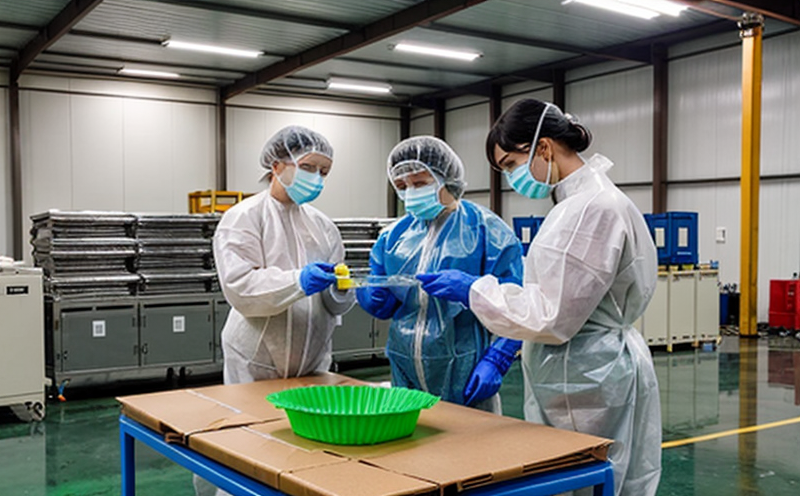ISO 178-5 Flexural Strength under Environmental Conditions
The ISO 178-5 test method is designed to determine the flexural strength of materials, particularly plastics, under specified environmental conditions. This service is essential for ensuring that plastic packaging withstands the stresses and strains it may encounter during its lifecycle. The test involves subjecting a specimen to bending until failure occurs, while simultaneously exposing it to temperature cycling or other environmental variables such as humidity.
The importance of this testing cannot be overstated in sectors like food packaging, pharmaceuticals, and consumer goods where integrity is paramount. By simulating real-world conditions, manufacturers can ensure their products meet the highest standards of safety and performance. Flexural strength provides critical insights into how a plastic material behaves under stress, which is crucial for predicting its durability and reliability.
Flexural strength testing helps in optimizing product design by identifying potential weaknesses early on. Engineers can use this information to improve formulations or select alternative materials that better suit the intended application. Additionally, it aids in compliance with regulatory requirements and industry best practices, ensuring products meet global standards for safety and quality.
During the test, specimens are carefully prepared according to specified dimensions outlined in ISO 178-5. These samples are then subjected to controlled bending until they fracture, at which point their maximum load-bearing capacity is measured. Environmental factors like temperature changes or moisture content play significant roles in influencing the outcome of these tests.
Understanding how different environmental conditions affect plastic packaging performance enables manufacturers to make informed decisions about material selection and processing techniques. This knowledge also supports continuous improvement efforts aimed at enhancing product sustainability and reducing waste throughout the supply chain.
For instance, understanding the impact of temperature extremes allows companies to design packages that maintain their integrity in various climates, whether they're shipping goods across continents or storing them locally. Similarly, knowing how humidity affects certain plastics helps prevent premature degradation caused by moisture absorption during manufacturing or storage processes.
The ISO 178-5 test not only evaluates a material's mechanical properties but also contributes significantly to overall quality assurance programs within organizations. It serves as an important tool for identifying areas where improvements could lead to better performance and longer-lasting products.
Applied Standards
| Standard | Description |
|---|---|
| ISO 178-5:2021 | Determination of flexural strength under environmental conditions for plastic materials and test specimens. |
| ASTM D6272 | American Society for Testing Materials standard method for determining flexural properties of plastics. |
International Acceptance and Recognition
The ISO 178-5 flexural strength test has gained widespread acceptance across industries worldwide, especially among those dealing with plastic packaging. Its international recognition stems from its reliability in providing consistent results that are comparable between laboratories regardless of location.
Many countries have adopted this standard as part of their national regulations or guidelines for testing plastic materials. Compliance with such internationally accepted methods enhances trust and facilitates trade by ensuring compatibility across borders.
In addition to its role in meeting regulatory requirements, adherence to ISO 178-5 fosters innovation within the packaging sector. By adhering to these globally recognized standards, manufacturers can stay competitive while contributing positively to global standards-setting initiatives.
Environmental and Sustainability Contributions
- Helps in designing more sustainable packaging by identifying materials that perform well under various environmental conditions.
- Facilitates the development of biodegradable or recyclable plastics through rigorous testing.
- Promotes energy efficiency by optimizing material usage based on flexural strength data.
- Encourages reduction in waste generation via improved product design and lifecycle management strategies informed by test results.





